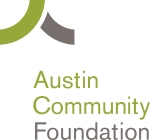Do people give less when they worry about having less?How will nonprofits and charities, which rely on your donations, weather the economic downturn, which seems less about the effect on our wallets than the effect on our psyche?
The Austin nonprofit community – like small businesses, individuals close to retirement, parents about to put kids in college, young adults about to enter the workforce, presidential campaign managers, pet owners, European hair stylists, Chinese peasants, the astronauts on the space station, and just about everyone else – is worried: How are we going to survive in this economy?
I’ve been reading people’s assessments of the economy and who they think is going to come out on top, and they all sound like this:
“The organizations that always do well will continue to do well. Those that don’t, won’t. “
Also, here’s my summary of people’s plans for surviving it:
“We’re just going to hunker down and keep doing what we do best.”
AND if you’re looking for advice,
“Prepare now for things to get worse by being financially responsible.”
Now, I don’t mean to belittle anyone’s fear, and I know ridiculously little about the economy… except that there doesn’t seem much we can do about it other than be our usual, “financially responsible” selves. Either we sink or we swim, and if we’re just barely floating now we might be looking at the bottom of the pool. There are a million ways to say it, but it all sounds a little like common sense to me. (Man, it’s so hard not to say “duh” out loud when I read these things.)
Barry Silverberg of the Texas Association of Nonprofits and the Center for Community-Based and Nonprofit Organizations told Andrea Ball this week, “There is so much we can be doing to strengthen our organizations and should not be using the economy as an excuse for all of our problems. Certainly our uncertain economic times has very real impact and I cannot overstate the importance of increasing financial support to an ever strapped sector. However, we must not panic or cry wolf.”
Earlier this month, Andrea wrote another story that mentioned one nonprofit that seemed to be doing well despite the economy, the Boys and Girls Clubs of the Capital Area, which told her, “We have not had to lay off any staff members, although we are watching our salaries very closely and being extra cautious about not overstaffing.”
Here are some other links to assessments, plans and advice for nonprofits:
TANO reports what 17 nonprofit leaders from around Texas have to say about getting through this economic crisis.
A San Antonio CPA reports from an nonprofit CFO forum with advice for creating next year’s budget, handling this year’s finances, and reassuring nonprofit staff.
In an article titled, “The Nervous Economy,” Ron Kessler says, In the bad there is often good. And there are almost always opportunities.”
Convio, which sells software to nonprofits to help them solicit donations online, reported this week that a survey revealed that people will give more than $3 billion online to nonprofits despite the economy. (Convio, BTW, is an Austin-based company.)
On Thursday, Greenlights will host a panel discussion about this same topic. The event is a sell-out. GivingCity will also publish a story about local nonprofits and the economy, and we’ll focus specifically on your role as a board member and/or major donor. Stay tuned, and in the meantime, keep up the good work.
Filed under: Creative fundraising, Learning opportunities, State of Austin Philanthropy, The business of nonprofits | Tagged: advice, Andrea Ball, Austin, Convio, economy, fundraising, nonprofits, TANO | Leave a comment »








